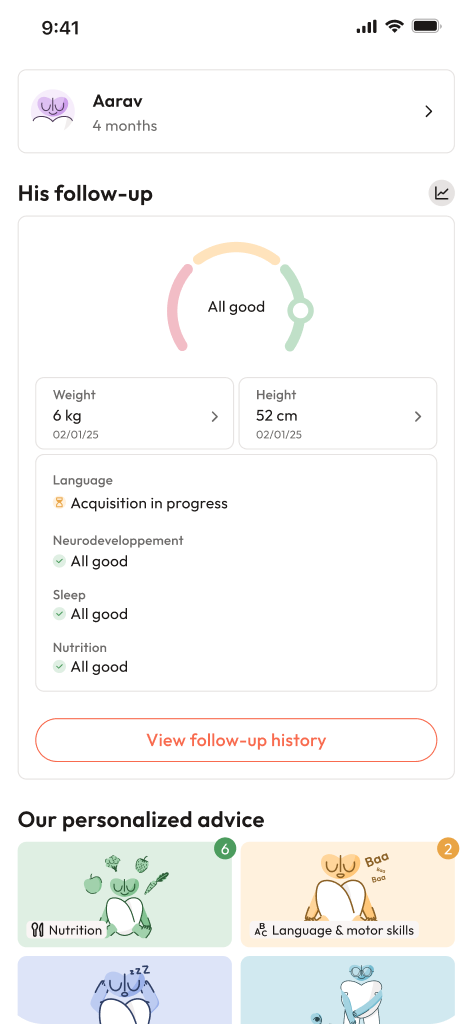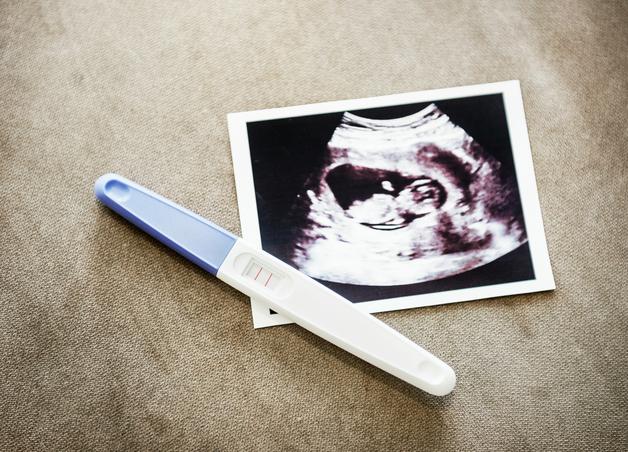Curious, worried, or simply lost in the sea of terms swirling around pregnancy and prenatal care? For many parents, the word “amniocentesis” alone can prompt a flurry of questions. Is it safe? Is it needed? What does it actually reveal about the baby? And if your doctor has recommended it, anxiety might mix with curiosity, making clear information—and a little reassurance—feel especially valuable. So, let’s demystify amniocentesis together: what it really is, when it is suggested, what parents can genuinely expect, and how you can make confident choices, whatever your circumstances. With insight, attention to detail, and consideration for the unique path each family walks, we take a close look at the realities—medical, practical, and emotional—of amniocentesis. Ready to clear the fog?
What is amniocentesis? Why, when, and for whom?
You might wonder, “Isn’t pregnancy already full of tests? Why another needle?” Amniocentesis is not just another number or scan. In fact, it is often the reference point for accuracy when screening results or ultrasound images raise more questions than they answer. This test involves drawing a small sample of amniotic fluid—the protective liquid that surrounds your baby in the uterus—using a slender, precisely guided needle. What makes this fluid special? It contains the baby’s own cells, carrying genetic blueprints and revealing details unseen by regular ultrasounds or blood tests.
When is amniocentesis typically considered? Here’s a quick snapshot:
- Genetic risk indication: If NIPT (noninvasive prenatal testing), maternal serum screening, or detailed ultrasound points to a possible chromosomal difference, amniocentesis can clarify—confidently and specifically.
- Family history: When certain genetic conditions or chromosomal rearrangements are known in the family, targeted testing during pregnancy becomes an option.
- Advanced maternal age: In some pregnancies, age brings a slightly higher risk for chromosomal changes, so doctors may suggest amniocentesis based on gestational timing and your personal history.
- Other rare reasons: Suspected fetal infection, unexplained anomalies, or when previous children had specific inherited disorders.
Does every pregnancy need it? Absolutely not. Amniocentesis is recommended for clear medical reasons—never as a routine step for all.
The science and sequence of amniocentesis
Visualise it. The room is calm, lights perhaps a little dimmed, a screen displaying the shifting outlines of your baby afloat. A fetal medicine specialist—trained in both science and gentle technique—selects just the right spot, guided by real-time ultrasound. In goes a fine, sterile needle, bypassing your baby and the placenta, to draw about 20 millilitres (that’s less than two tablespoons) of the precious fluid. The whole thing? Often under a minute for the needle part, and about 15–30 minutes for planning, scanning, and preparation.
Is it painful? Most parents describe a quick pinch, a pressure, sometimes a mild cramp. For some, a local anaesthetic offers extra comfort. Calm breathing, a trusted hand, and open explanation ease the tension further.
Once the sample reaches the lab, a whole suite of tests begins:
- Karyotype analysis reveals the number and structure of chromosomes. Looking for conditions such as Down syndrome (trisomy 21), Edwards syndrome (trisomy 18), or Patau syndrome (trisomy 13).
- Chromosomal microarray detects tiny duplications or deletions—called copy number variants—that classic karyotyping might miss.
- Rapid QF-PCR or FISH tests can return preliminary answers—for the most common aneuploidies—in just 48–72 hours.
- Targeted gene sequencing for single-gene disorders if one is known in your family.
- Infection tests (like PCR for cytomegalovirus or toxoplasma), if infection is suspected.
- Markers such as AFP and acetylcholinesterase help diagnose concerns about the baby’s spine or neural tube.
Every tube of fluid is a tiny snapshot—telling the laboratory story that no imaging or screening can fully reveal.
When is amniocentesis done, and are there types?
As with many things in pregnancy, timing is everything. Standard amniocentesis is performed between 15 and 20 weeks. Why this window? Earlier, the fluid may be insufficient and the risk for complications marginally higher. Later, the benefit is balanced against the advancing timeline of pregnancy decisions.
Rarely, amniocentesis is used in the third trimester—to check fetal lung maturity (when early delivery is anticipated), to clarify tough diagnostic dilemmas, or sometimes in cases of suspected intrauterine infection.
In pregnancies with twins, or where the placenta is in a tricky spot, the approach may be modified, sometimes with more than one needle pass, but always under the watchful, protective eye of ultrasound.
Amniocentesis is not to be confused with:
- Chorionic villus sampling (CVS), which is done earlier (10 to 13 weeks), sampling placental tissue, not amniotic fluid.
- Cordocentesis, or sampling fetal blood from the umbilical cord, typically reserved for rare, specific situations in late pregnancy.
Step-by-step: Planning, procedure, and what comes next
No parent dreams of lying on a hospital bed awaiting a needle, no matter how slim or skilled the hands holding it. Here’s a practical checklist for clarity and peace of mind:
Before:
- Bring along your blood group/Rh card and all previous test reports (ultrasound, prescriptions, screening results).
- Share medication lists, especially if you’re taking anticoagulants or high-dose aspirin.
- Expect detailed informed consent, not just a signature but an open dialogue on what amniocentesis can and cannot show, what it means for your current pregnancy, and possible risks—like miscarriage (about 0.3% to 1%), infection (very rare), or, for Rh-negative mothers, sensitisation (where anti-D immunoglobulin will be offered).
- Hydrate, choose comfortable clothing, and bring someone supportive for those quiet minutes before and after.
During:
- Ultrasound preparations, gentle touch, and that moment of stillness as fluid is gently drawn.
- Sensations? Mostly brief, sometimes slightly uncomfortable, but typically no severe pain.
- In special scenarios (previous caesarean, twin pregnancy, anterior placenta), additional steps ensure safety, with the clinical team adapting the approach.
After:
- Stay under observation for a short while and be ready to rest for a day or two at home.
- Mild cramps or a little spotting may follow—these usually fade within 24–48 hours.
- Your care team will give you a clear outline of warning symptoms to watch for: heavy bleeding, high fever, continuous severe pain, or sudden leak of fluid. Should any arise, contact your doctor promptly.
What amniocentesis can—and cannot—reveal
Let’s be honest: no test, not even amniocentesis, tells you everything. But its power and reliability are significant for a wide array of conditions:
- Chromosome analysis: Down syndrome and other aneuploidies, sex chromosome differences, and some submicroscopic changes.
- Targeted single-gene testing: When a familial mutation is already known.
- Molecular infection detection: Identifying certain prenatal infections that could change your care.
- Neural tube defect diagnosis: Only when risks are identified by imaging or abnormal maternal blood screens.
Yet, some limits remain:
- Certain genetic or inherited disorders may escape detection if not specifically targeted.
- Disorders like autism or most learning differences typically do not have a single genetic “signature” visible via this route.
- Variants of uncertain significance (VUS) can leave the picture a little murky, sometimes leading to further family testing or referral.
Turnaround for results can vary: rapid tests may inform you within three days, while full chromosome microarrays or sequencing may need two to four weeks.
Risks, recovery, and aftercare
The shadow most parents notice—“Is it safe?” The honest answer? Amniocentesis does carry a small risk, primarily miscarriage—statistically, about 0.3% to 1% in large published studies (and possibly even lower in experienced hands with continuous ultrasound). Other potential complications: mild abdominal cramps, minor fluid leakage (very often self-limited), transient bleeding, or, rarely, infection. Uterine anatomy, more than one needle pass, twins, or placenta location may slightly influence risks.
If you are Rh-negative, your team will administer anti-D immunoglobulin after the test to prevent sensitization—a precaution well known in modern obstetrics.
Typical recovery is gentle and brief:
- 24–48 hours of relative rest (which means no heavy lifting, no strenuous activity, a good excuse for a cup of chai and a favourite book).
- Acetaminophen for mild discomfort (unless your doctor suggests otherwise).
- A call to your care team if you encounter high fever, persistent pain, heavy bleeding, strong contractions, loss of fluid, or reduce in baby’s movements.
Rapid, clear instructions and contact numbers are part of good care.
Comparing amniocentesis with other options
Screening tests like NIPT or maternal serum double marker offer excellent noninvasive insight but are not diagnostic. Only amniocentesis (and, for some, CVS) conclusively confirm or rule out specific chromosomal or genetic issues.
CVS is performed earlier and samples placental tissue—which sometimes may reflect only the placenta’s, not the baby’s, genetic information. Amniocentesis, using amniotic fluid, directly examines fetal cells. Each test, each option, is matched to a different timing and need.
Cordocentesis, meanwhile, is generally kept for last-resort scenarios or to answer certain late-pregnancy questions, and carries additional risks.
Cost, access, and choosing where to go
Costs of amniocentesis can range widely, depending on which genetic or molecular tests are ordered, and hospital or laboratory charges. In medically indicated scenarios (abnormal scans, prior family history, high-risk results), insurance or public health coverage often applies. Your doctor’s office can help you gather necessary prescriptions, test reports, and formal referrals.
Choosing a centre? Maternity hospitals attached to universities or advanced diagnostic centres, with robust access to genetic counseling, are usually recommended. Experience in prenatal diagnosis and the support of a multidisciplinary team can make all the difference.
Medical terms to know—decoded
- Karyotype: A lab test that takes a wide-angle photo of all your baby’s chromosomes, checking number and structure.
- Chromosomal microarray: A high-resolution scan picking out smaller missing or duplicated chromosome pieces.
- QF-PCR/FISH: Rapid tests giving early clues about the most common chromosome differences.
- Aneuploidy: Having too many or too few chromosomes in a cell.
- Mosaicism: When two genetic cell lines are present in the same individual.
- Variant of uncertain significance (VUS): A genetic change that—so far—doesn’t clearly spell problem or no problem.
- NIPT: Early pregnancy blood screening that checks baby’s DNA fragments in your own blood.
- AFP and acetylcholinesterase: Markers in amniotic fluid pointing toward neural tube (spine and brain) issues.
Key Takeaways
- Amniocentesis is a scientifically sound, ultrasound-guided diagnostic test, sampling amniotic fluid to examine fetal genetics and markers for certain medical conditions.
- Most commonly done between 15 and 20 weeks, this test is directed—not routine—and serves families with increased risk due to screening, family history, or ultrasound findings.
- The risk of miscarriage is low, with most adverse outcomes (if any) occurring in the first two weeks post-procedure.
- Tests possible via amniocentesis include rapid aneuploidy screening, full karyotyping, advanced microarray analysis, and, when needed, infection testing.
- Alternatives like NIPT are superb for screening, but only amniocentesis can confirm the nature of possible genetic or chromosomal changes.
- Thoughtful counseling, open communication, and multidisciplinary support help families interpret findings and make informed choices.
- Complex or ambiguous results are not the end of the story; further testing or consultation is always available to clarify and support.
- For further support, answers to your most personal questions, and access to child health resources, you can easily download the application Heloa—it offers personalised advice, follow-up, and free health questionnaires for your child.
Questions Parents Ask
Can amniocentesis be used to establish paternity?
Yes, amniocentesis samples fetal cells that contain DNA, and this can be used for paternity testing. However, paternity assessment is not standard—specific consent and arrangement are essential. Both the putative father and the birthing parent must provide samples for comparison. Because there are minimal risks involved, many families wait for postnatal testing (using only saliva or blood, entirely noninvasive), but if prenatal paternity needs clarification, mention this early to the team so legal, ethical, and lab pathways can be organised.
Can amniocentesis tell me if my child will have autism or learning/developmental disorders?
Not directly. While standard amniocentesis identifies many chromosomal and some genetic changes—some of which may increase the risk for neurodevelopmental differences—most causes of autism, speech delay, or learning differences are not visible using these tools. In some situations, broader gene sequencing can offer insights, but no test removes all uncertainty. Genetic counselors can help clarify options, limits, and, if needed, suggest follow-up or monitoring after birth.
Will having an amniocentesis affect my ability to have more children?
It is quite unlikely. Amniocentesis impacts only the ongoing pregnancy; it does not diminish fertility or cause issues for future conception when done under sterile conditions and without procedural complications. Temporary risks are usually limited to the current pregnancy. Only in the rare event of serious infection or major injury could there be a future impact. Concerned about your own situation? A discussion with your obstetrician can help you weigh personal factors and feel confident moving ahead.

Further reading:









